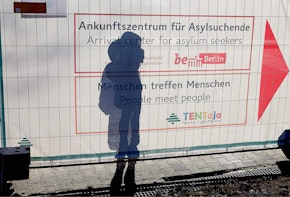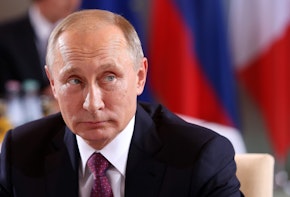Since March 2015, Saudi Arabia and ten other countries have been conducting a bloody airstrike campaign against the Houthi rebel forces in Yemen. The campaign, meant to counter what Saudis call the “Iranian Threat” in the Arabian Peninsula, had received limited support from the Obama Administration, but Saudi Arabia and its coalition partners are now operating with a freer hand from the Trump White House.
One of the main U.S. justifications for arming and supporting the Saudi war in Yemen is the claim that the Houthis—a Yemeni Zaydi Shia-led rebel group—are Iranian proxies, seeking to overthrow the government of Yemen and bring it under Iranian influence. The Houthis and Iran, on the other hand, deny a close relationship and downplay the levels of support the rebels receive from Tehran.
As a matter of fact, however, both sides are incorrect—and the truth is somewhere in the middle. The Houthis didn’t emerge due to Iranian support, even if they got it later on their rise to power. Rather, they originated as a theological movement in the early 1990s. They became violent in 2004 when Houthi supporters protested in mosques with their famous slogan “Death to America,” angering then-Yemeni President Ali Abdullah Saleh, who sent government troops to try and curb supporters. Hussein Badreddin al-Houthi, the founder of the Houthis, was killed as a result, sparking a six-year war.
And while there is no doubt that the Houthis are the biggest threat to the idea of the republic in Yemen, that is not due to Iran’s role. Iran’s support to the Houthis in Yemen is very small compared to that of Iraq, Syria, or Lebanon. It’s not that Iran’s support isn’t a destructive force—it is—but it is not the main or only one. The weapons and business Houthis get via the black market from the Yemeni government, for example, are worth more than the funding they get from Iran. Even countries like Oman and Russia currently have more direct leverage over the Houthis than Iran does.
But it’s important to note that the Saudi war didn’t make the relationship between the Houthis and Iran weaker. Rather, the war made the relationship more essential.
Old and New Claims
In mid-July of 2016, Yemeni President Abdu Rabbu Mansour Hadi departed from his residence in the Saudi capital, Riyadh, and visited the Yemeni governorate of Marib for a few hours before returning to Riyadh. During this rare visit by the Yemeni president from exile to one of his governorates, and in a brief speech to a crowd of his statesmen—including his deputy Ali Mohsen al-Ahmar, Iran’s arch-foe and the sectarian antithesis to Iran’s allies in Yemen—Hadi said that he shall not allow Iran to establish a “Persian” state in Yemen.1 He also reiterated his promise to raise the flag of the Republic of Yemen in Maran, the Houthi leader’s stronghold in Saada governorate. This implied a direct suggestion that Saada had fallen out of the authority of the Republic of Yemen, or that it has a leaning that is not republican—which echoes another charge that Ansar Allah (or the Houthis) are but an extension of the former Yemeni monarchy, or in other words, that the group is ideologically linked to Iran. Before and after this, President Hadi and almost all his officials, in addition to many Gulf officials, have repeatedly stated that the war in Yemen is effectively a war against Iran.
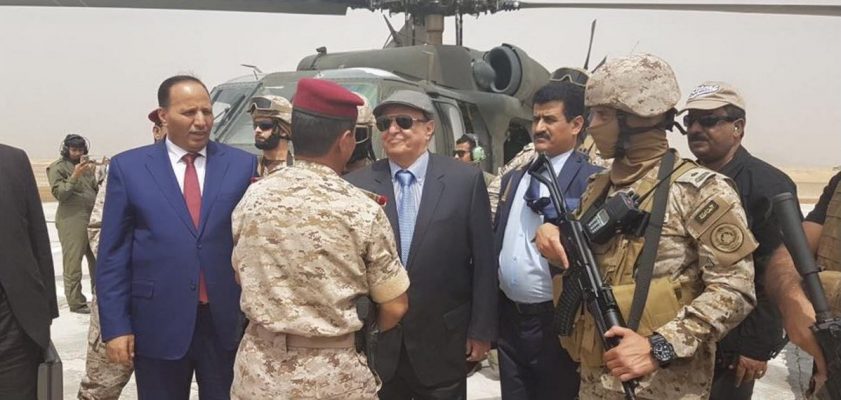
On several other occasions, President Hadi repeatedly expressed his concern of Iranian expansionism in Yemen to his visiting delegations, especially those from the Gulf and the West, even at a time when he still resided in Sanaa. Hadi went as far as to tell visiting U.S. Senator John McCain in 2013 that he feared Iran more than al-Qaeda in the Arabian Peninsula—America’s enemy and its foremost priority in Yemen.2 This may have been President Hadi’s own speculation of his visitor’s position on Iran. Even then, however, President Hadi himself had a vital, albeit concealed, connection with Tehran.
Many analyses have been written and official statements made concerning Iran’s ambitions in Yemen, which it especially pursued through its relationship with its now-vigorous ally, the Houthis (Ansar Allah).3 Following their coup d’etat and takeover of power in Sanaa in January 2015, as well as their activation of a revolutionary committee in its wake, a surprising deal was struck between the group and Iran which further perpetuated these assumptions.4 The deal initiated nearly fourteen weekly airline flights between Sanaa and Tehran.5 Abdulmalik Al-Houthi, the Houthis’ current leader (and brother of the late Hussein Badreddin al-Houthi), announced that Saada airport, adjacent to the Saudi border, would be rehabilitated so that it can receive direct flights from Tehran. Consequently, Iran Air immediately began a series of flights to and from Sanaa. What was peculiar about this agreement is that Yemen, which has more than two million workers in Saudi Arabia,6 does not maintain this frequency of flights with Saudi Arabia, let alone the handful of a few hundred—or few thousand at most7—Yemenis residing in Tehran.
This marked a shift in Iran’s role from being a hidden marginal ally into a power at the forefront. That influence not only manifested in Iran’s alliance with a non-state group (the Houthis), but also in an alliance with the Yemeni state itself, which by that point, the Houthis had controlled by armed force. The number of unjustified routine flights raised many eyebrows regarding the nature of such flights and the content of their cargo, on either of their back-and-forth journeys between Sanaa and Tehran. The content and cargo of these planes were never announced to public—not even the type of passengers they were carrying.
By early March 2015, following the inauguration of these regular flights—and less than a week before the launching of Saudi intervention in Yemen—one airplane was boarded by a high-ranking delegation of Houthi and Yemeni officials en route to Tehran for a long visit, in search of financial support for the newly imposed regime in Sanaa.8 The delegation returned with many Iranian pledges of support, most of which have come to no fruition, as echoed by several delegation members later on. It became clear, more so than at any time past, that Iran prefers to instrumentalize the Houthis and their recent advancement, rather than deal with them on an equal footing as a peer or a strategic ally—as is the case for the Iranian government’s relations with Hezbollah, for instance.
In any case, this controversy has recently and extensively resurfaced, especially after Saudi Arabia entered the war in Yemen over two years ago, to defeat what the Saudi government described as the growing Iranian influence in Yemen at the expense of its own historical influence.9 A few days prior to this campaign, the Houthis’ and Saleh’s forces performed an ill-advised series of military exercises within proximity of the Saudi border. This marked a clear and outright challenge by a new, unruly force that is capable of anything in order to legitimize its novel presence. This military action also coincided with a sudden and dramatic succession and ensuing shift within the House of Saud, which did not previously engage in military intervention. The declared Saudi goal with which it justified its intervention was a request by Hadi to reinstate his authority.
In either the old and the renewed discussions of this issue, the reality is muddled between two perspectives—both of which lack accuracy. One renders the Houthis as fateful allies and structural successors of Iran, while the other categorically opts out of recognizing any relationship between the two actors. Indeed, the truth lies at an ambiguous juncture in the middle of these two extremes. To understand these intertwined relations, one cannot but pay attention to each in a set of interrelated elements or factors.
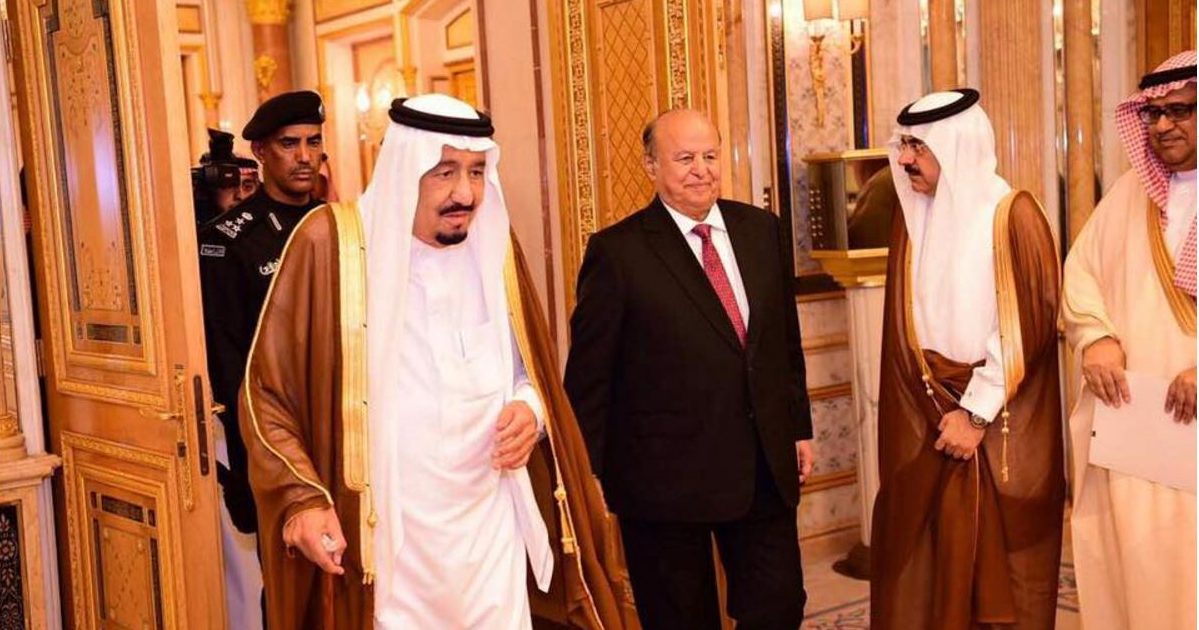
Not Ally or Proxy but Cheap Tool
There is indeed a direct relationship between the Houthis and Tehran: financial, media, and political support for the Houthis from Tehran. To a certain point, Tehran provides the Houthis with military training support, as well. This assistance has been facilitated by advisors of the first degree, close the Houthi leader, Abdulmalik al-Houthi, who has coordinated support, training and funding between the two sides. However, the factors which have led to the emergence and perseverance of the Houthis are local rather than external, in the sense that the vitality of maintaining this rapport with Iran is not as fateful as President Hadi’s relationship with Riyadh, for instance. While the Houthis could withstand an extended hold over power without Iranian intervention, President Hadi’s endeavor to reclaim power would not likely survive even a few days if he were to be abandoned by Saudi Arabia. This is partly due to the fact that the real challenge facing the Houthis in Yemen is the Yemeni public, rather than Saudi Arabia or the forces associated with Saudi Arabia, whose relevance is secondary, not paramount.
The limitations of any Iranian military support can also be attributed to the simpler fact that Yemen, which is saturated with arms and fighters (in addition to Saleh’s army and weapons arsenal, which has recently openly aligned itself with the Houthis), undermines the urgency for more foreign weapons or fighters. Even the limited number of advisers who were based in Yemen at the beginning of the war (less than one hundred at a given time) were then gradually deported by the Houthis as part of their launching negotiations (which later came to a halt, both the negotiations and the rest of the deportations) with Saudi Arabia earlier last year. According to multiple diplomatic sources,10 these agreements were briefly followed by an intermittent ceasefire along the borders. However, Reuters later reported that sophisticated weaponry had reached the Houthis through Oman—which was categorically denied by the Omanis.11 The Houthis and their allies may also benefit from Iran’s military expertise more than material aid and weaponry, which are subject to a tight embargo enforced upon Yemeni ports by American and Egyptian naval vessels. In fact, the arms smuggled to the Houthis and Saleh by hidden allies in the Legitimacy Front, and the resources of the “legitimate government,” according to different and well-informed leadership sources in the Houthi-Saleh alliance and the exile government, are far greater than those arriving from Iran. The Legitimacy Front is comprised of all groups fighting against the Houthis.
While the Iranian support to Houthis is clearly limited, it is still essential for the Houthis because at this point, they do not have any other public ally. Furthermore, the Iranian support provides the Houthis with skills they are not good at, such as strategic planning, politics, and some specific military specialities in dealing with complicated and strategic weapons.
Iran Was Surprised, Too
In any case, many Iranian officials used to dealing under the table were surprised, as the rest of the world was, by the sudden Houthi takeover of Sanaa in September 2014.12 Many argue that the relationship between Saleh and Iran is in many ways more consequential than the Houthis’ alliance with Iran, and this has agitated the Saudis far more than the Houthi-Tehran connection.
Much of the Houthis’ rapport with Iran stems from their ignorance of politics rather than their eagerness to strike an actual deal with the Iranians.
As previously alluded to, in reality, states such as Russia and especially Oman have a more direct leverage over the Houthis. Much of the Houthis’ rapport with Iran stems from their ignorance of politics rather than their eagerness to strike an actual deal with the Iranians. This does not negate the fact that Iran is the group’s model to be emulated in public discourse—particularly its hostility toward America and Israel echoed in the motto of Houthi followers (which is borrowed from the Khomeini revolutionary discourse of the late 1970s).13 Nor does it deny the fact that prominent leaders of the group have resided in Iran for intermittent and sporadic periods of time, especially before the publicized emergence of their movement; as many of the Houthi leaders still own property and manage investments in Iran.
The above facts notwithstanding, those who managed to deter the Houthis from forming a government after the resignation of Khaled Bahah’s government in January 2015 were the Russians, not the Iranians. Russia is also the state that has managed to dissuade the Houthis from attempting to form a unilateral government after their political council appointed Abdel-Aziz bin Habtour as prime minister for a government to be formed later. They came to agreement for several months, before retracting their decision and moving towards forming the government.14
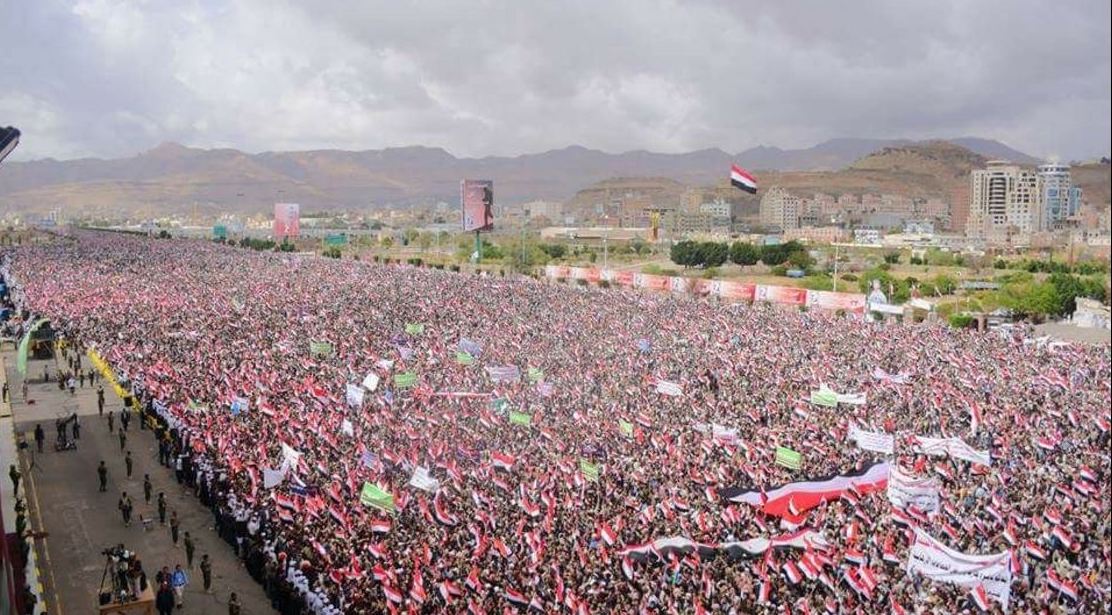
To Iran, the Houthis have not, in fact been much of strategic allies, but they could rather be perceived as the least costly, yet the closest, middle finger that could be raised against Saudi Arabia from its own backyard. It is true that the group is Iran’s strongest ally in Yemen, but the amount of Iranian money spent on the Houthis is less than is spent on one aligned Lebanese political leader, for example.
To Iran, the Houthis have not, in fact been much of strategic allies, but they could rather be perceived as the least costly, yet the closest, middle finger that could be raised against Saudi Arabia from its own backyard.
Moreover, and unlike Saudi Arabia, Iran has nothing to lose in Yemen; Iran views Yemen as a low-cost environment to enact attrition against Saudi Arabia. As a Western official formulated it: the Iranians throw a dollar at Yemen, knowing full well that Saudi Arabia would in turn spend 2 million, which means it is a winning battle for Iran according to this standard.15
Iran has a broad suite of interests in the Arabian peninsula, most of them focused on Saudi Arabia and Bahrain. Yemen is a secondary interest for Tehran. For instance, Iran had a much stronger reaction when Saudi Arabia executed Shia Saudi cleric Nimr al-Nimr in January 2016 than it had to any aspect of the entire Saudi intervention in Yemen.16 In the international arena, Iran has worked toward saving al-Nimr more than anything it has concretely provided for the Houthis—and has instead settled for referencing the war in Yemen whenever it deemed necessary to score points against Saudi Arabia, and whenever it wished to showcase its sectarian presence in the region.
A Troubled Partnership
The relationship between the Houthis and the Iranians is not entirely harmonious. Iran does not seem to appreciate a moderate Arab Shiism such as Zaydism, which is beyond its control and religious authority. The disparity between Yemen’s Zaydis and Iran’s Twelver Shiites is indeed fundamental. Iran, in fact, views the Zaydi component of the Houthi doctrine as dangerous, and is working toward empowering and abetting individuals and blocs within the Houthi group that are more adherent to its own doctrine and more detached from to the true legacy of Yemeni Zaydis. This falls in line with multiple Iranian ventures of laying the foundation for a religious political culture closely related to the principles of imamate and legitimate rule, to which Yemeni Zaydis do not adhere as much—with the exception of two minor Zaydi sects, the Kisaa’is and the Jardoudis. This is an incubation spawning process sponsored by Tehran to its only ally in Yemen. Most Houthis are more concerned about the future of their relationship with Saudi Arabia—despite the ongoing conflict—than about their alliance with Iran. This is due to their awareness of the inevitability of geographic, historical, and even religious realities present between Yemen and Saudi Arabia—sectarian disparity with the regime in Saudi Arabia notwithstanding.
Perhaps the most remarkable irony which dispels all of these preconceived notions about Yemen’s relationship with Iran is that Iran supported the southern leader Ali Salem al Beidh before the two sides parted ways as Houthis assumed authority. However, the meager numbers of Southern Movement troops trained by Iran were in fact the same units that have defeated the Houthi forces, expelling them from Dhale (south of Yemen) in the middle of 2015.17
Similar to what the United States—under both the Obama and Trump administrations—did by outsourcing Yemen to Saudi, Iran has outsourced Yemen and the Houthis to Hezbollah.
Additionally, despite his constant use of publicized sectarian discourse when addressing Iran, President Hadi has had important connections with Iran during the past few years, which have gone to the extent of exchanging congratulations (with the Supreme Leader of the Iranian Revolution Khamenei, through various envoys between) at a time when Sanaa was falling to the Houthis in September 2014. This connection was not truly laid to rest until the increasing upsurge of dependence by Saleh and the Houthis upon Iran, while Saudi Arabia maintained its alliance with Hadi as a pretext for its later intervention in Yemen. At the time, Iran had chosen the stronger bet, since Saleh and the Houthis both enjoyed more popular support and deeper connections within the army and state institutions. Iran has often strengthened its relationship with the Houthis through regional mediators, such as Hezbollah, which is another sign of the lack of clear dependence on them in a regional gamble. Similar to what the United States—under both the Obama and Trump administrations—did by outsourcing Yemen to Saudi, Iran has outsourced Yemen and the Houthis to Hezbollah.
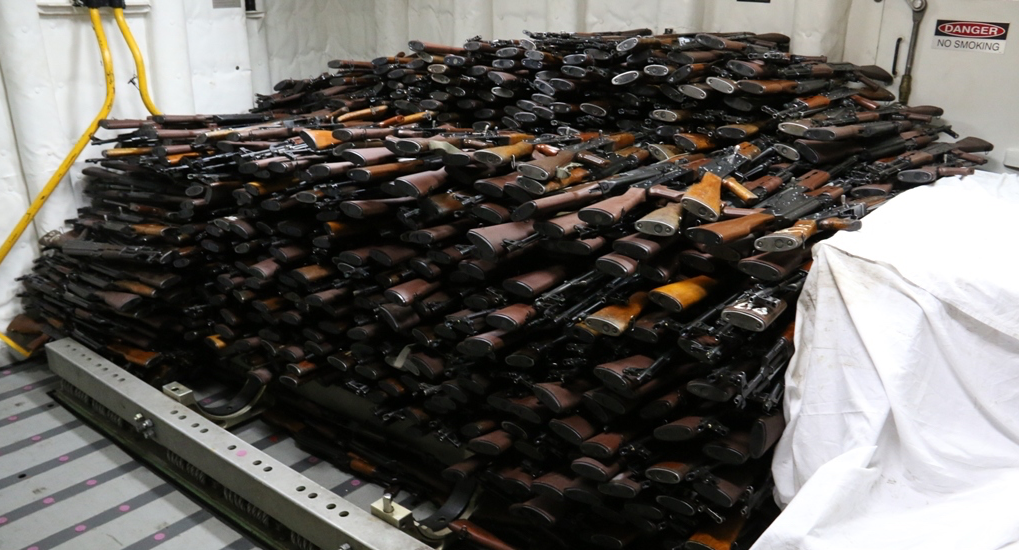
Since its establishment, Hezbollah has been the main “contractor” for Iran’s work and influence in Yemen. It remains the contact point between the two countries, the one running trainings and “building capacity” for the Houthis, and the one directly running the Yemen file for Iran.
The current U.S. administration under President Trump, like Saudi Arabia and its other allies in the Yemen war, often inflates Iran’s relationship with the Houthis and overstate the supposedly exclusive nature of the Houthis allegiance to Iran. At the same time, the Houthi attempt to disclaim any notion of such a relationship is also wildly inaccurate.
More importantly, and despite the White House statement18 earlier this year that Houthis are Iran’s hands, it is important to realize that Iran’s role in Yemen is basically destructive, as everywhere in the region. However, the Houthis are also a destructive group, with and without Iran.
Cover photo: Supporters in Yemen’s capital Sanaa celebrate the announcement of a “new government” formed by Houthis in November 2016. Credit: Twitter/Ansar Allah Alyemen.
Notes
- Compiled from agencies, “Yemen’s Hadi visits Marib, vows to defeat Houthis,” Anadolu Agency, July 10, 2016, http://aa.com.tr/en/middle-east/yemen-s-hadi-visits-marib-vows-to-defeat-houthis/605233 and “Hadi from Ma’rib: I will not allow the Houthis to establish a Persian state,” RT, July 10, 2016, https://arabic.rt.com/news/831644-%D8%A7%D9%84%D8%B1%D8%A6%D9%8A%D8%B3-%D8%A7%D9%84%D9%8A%D9%85%D9%86%D9%8A-%D8%A7%D9%84%D8%AD%D9%88%D8%AB%D9%8A%D9%88%D9%86-%D9%85%D8%A3%D8%B1%D8%A8/
- Author Interview with John McCain, November 2013.
- “Riyadh Yaseen: ‘Bombing necessary despite casualties,’” Al Jazeera, May 2, 2015, http://www.aljazeera.com/programmes/talktojazeera/2015/05/riyadh-yaseen-bombing-civilian-casualties-150502074745709.html
- Maged al-Madhaji, “How Yemen’s Post-2011 Transitional Phase Ended in War,” Sana’a Center for Strategic Studies, May 19, 2016, https://sanaacenter.org/files/how_yemens_post_2011_transitional_phase_ended_in_war_en.pdf
- Compiled from agencies, “First direct flight from Iran to Yemen arrives,” Al Jazeera, March 1, 2015, http://www.aljazeera.net/news/arabic/2015/3/1/%D9%88%D8%B5%D9%88%D9%84-%D8%A3%D9%88%D9%84-%D8%B1%D8%AD%D9%84%D8%A9-%D8%AC%D9%88%D9%8A%D8%A9-%D9%85%D8%A8%D8%A7%D8%B4%D8%B1%D8%A9-%D9%85%D9%86-%D8%A5%D9%8A%D8%B1%D8%A7%D9%86-%D8%A5%D9%84%D9%89-%D8%A7%D9%84%D9%8A%D9%85%D9%86
- “Saudi Deports Thousands of Yemenis, Remittances to Suffer – Official,” Reuters, April 1, 2013, http://uk.reuters.com/article/uk-yemen-saudi-expatriates-idUKBRE9300AH20130401
- This estimation is based on various interviews the author has conducted.
- “Yemeni delegate arrives in Tehran to discuss political developments,” Middle East Press, March 2, 2015, http://middleeastpress.com/arabic/%D9%88%D9%81%D8%AF-%D9%8A%D9%85%D9%86%D9%8A-%D9%8A%D8%B5%D9%84-%D8%A7%D9%84%D9%89-%D8%B7%D9%87%D8%B1%D8%A7%D9%86-%D9%84%D9%84%D8%A8%D8%AD%D8%AB-%D8%B9%D9%86-%D8%A7%D9%84%D8%AA%D8%B7%D9%88%D8%B1%D8%A7/
- “Saudi King Replaces Crown Prince in Cabinet Reshuffle,” Al Jazeera, April 29, 2015, http://www.aljazeera.com/news/2015/04/saudi-king-salman-replaces-crown-prince-cabinet-reshuffle-150429020021160.html
- Interviews with different UN Security Council diplomats, February 2016.
- Yara Bayoumy and Phil Stewart, “Exclusive – Officials: Iran increases arms supplies to Houthis through Oman,” Reuters Arabic, October 20, 2016, http://ara.reuters.com/article/topNews/idARAKCN12K149
- Yara Bayoumy and Mohammed Ghobari, “Iranian Support Seen Crucial for Yemen’s Houthis,” Reuters, December 15, 2014, http://www.reuters.com/article/us-yemen-houthis-iran-insight-idUSKBN0JT17A20141215
- Farea al-Muslimi, “Yemen’s Houthis Proxy, Not Ally for Iran,” Al-Monitor, November 19, 2014, http://www.al-monitor.com/pulse/originals/2014/11/yemen-houthis-differences-hezbollah-lebanon.html
- Zakaria al-Kamali, “Ould Cheikh Ahmed: UN Special Envoy to Yemen (profile),” Anadolu Agency, February 12, 2016, http://aa.com.tr/ar/%D8%A7%D9%84%D8%AF%D9%88%D9%84-%D8%A7%D9%84%D8%B9%D8%B1%D8%A8%D9%8A%D8%A9/%D9%88%D9%84%D8%AF-%D8%A7%D9%84%D8%B4%D9%8A%D8%AE-%D8%A3%D8%AD%D9%85%D8%AF-%D8%A7%D9%84%D9%85%D8%A8%D8%B9%D9%88%D8%AB-%D8%A7%D9%84%D8%A3%D9%85%D9%85%D9%8A-%D8%A7%D9%84%D8%AA%D8%A7%D8%A6%D9%87-%D9%81%D9%8A-%D8%A7%D9%84%D9%8A%D9%85%D9%86-%D8%A8%D8%B1%D9%88%D9%81%D8%A7%D9%8A%D9%84-/697639
- Author interview with a Security Council diplomat, October 2016.
- “Sheikh Nimr al-Nimr: Saudi Arabia Executes Top Shia Cleric,” BBC, January 2, 2016, http://www.bbc.com/news/world-middle-east-35213244.
- Farea Al-Muslimi, “The Southern Question: Yemen’s War Inside the War,” Carnegie Middle East Center, July 8, 2015,
http://carnegie-mec.org/diwan/60627 - “Statement by the National Security Advisor,” The White House, February 1, 2017, https://www.whitehouse.gov/the-press-office/2017/02/01/statement-national-security-advisor.





